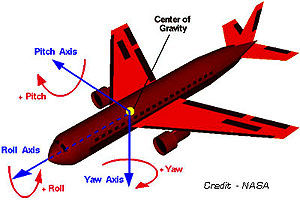Have you ever wondered as to how these amazing engineering structures work? Airplanes or Aeroplanes are one of the most amazing things that we see regularly. It is equally boarding a gigantic vehicle capable of carrying 500 or 600 people, and manages to get airborne without any much ado. Imagine, a Boeing 747 aircraft weighs up to 400 tons at takeoff, yet it gracefully taxes on the runway and, as if by magic, lifts itself into the air and can fly up to 18 hours without stopping.


Have you ever wondered as to how these amazing engineering structures work? Airplanes or Aeroplanes are one of the most amazing things that we see regularly.
It is equally boarding a gigantic vehicle capable of carrying 500 or 600 people, and manages to get airborne without any much ado. Imagine, a Boeing 747 aircraft weighs up to 400 tons at takeoff, yet it gracefully taxes on the runway and, as if by magic, lifts itself into the air and can fly up to 18 hours without stopping.
It is truly incredible when you think about it! Have you ever thought of the theory of flight and the different parts of a standard airplane, and how all this falls in place?
Before we move further, I suppose we see how the wings keep airplanes up in the air; it’s an important phenomenon that we take into consideration four basic aerodynamic forces: lift, weight, thrust and drag.
In order for an airplane to fly straight and level, the following relationships must be true:
"Thrust = Drag and Lift = Weight”. If, for any reason, the amount of drag becomes larger than the amount of thrust, the plane will slow down. If the thrust is increased so that it is greater than the drag, the plane will speed up.
Similarly, if the amount of lift drops below the weight of the airplane, the plane will descend. By increasing the lift, the pilot can make the airplane climb.
Thrust is an aerodynamic force that must be created by an airplane in order to overcome the drag. Airplanes create thrust using propellers, jet engines or rockets. Now, let’s look at drag.
The drag is an aerodynamic force that resists the motion of an object moving through a fluid (air and water are both fluids). If you stick your hand out of a car window while moving, you will experience a very simple demonstration of this effect.
The amount of drag that your hand creates depends on a few factors, such as the size of your hand, the speed of the car and the density of the air.
If you were to slow down, you would notice that the drag on your hand would decrease. The drag is the opposite force that tends to counter the motion of the Aircraft.
The wider the object, the more the drag; the drag is countered by the thrust or engine power.
If you’ve ever wondered why, after takeoff, a passenger jet always retracts its landing gear (wheels) into the body of the airplane, the answer (as you may have already guessed) is to reduce drag, the pilot wants to make the aircraft as small as possible to reduce drag.
The amount of drag produced by the landing gear of a jet is so great that, at cruising speeds, the gear would be ripped right off of the plane.
Weight is another factor, this one is the easiest. Every object on earth has weight (including air). A 747 can weigh up to 400 tons plus! And still manage to get off the runway.
Lift is the aerodynamic force that holds an airplane in the air, and is probably the trickiest of the four aerodynamic forces to explain without using a lot of math.
On airplanes, most of the lift required to keep the plane air borne is created by the wings (although some is created by other parts of the structure).
The principal concept in aerodynamics is that, air is a fluid.
As we mentioned, a principal concept in aerodynamics is the idea that air is a fluid.
Like all gases, air flows and behaves in a similar manner to water and other liquids. Even though air, water and oil may seem like very different substances, they all conform to the same set of mathematical relationships.
In fact, basic aerodynamic tests are sometimes performed underwater.
Another important concept is the fact that lift can exist only in the presence of a moving fluid. This is also true for drag. It doesn’t matter if the object is stationary and the fluid is moving, or if the fluid is still and the object is moving through it.
What really matters is the relative difference in speeds between the object and the fluid. Consequently, neither lift nor drag can be created in space (where there is no fluid).
This explains why spacecraft don’t have wings unless the spaceship spends at least some of its time in air.
The space shuttle is a good example of a spacecraft that spends most of its time in space, where there is no air that can be used to create lift.
However, when the shuttle re-enters the earth’s atmosphere, its stubby wings produce enough lift to allow the shuttle to glide to a graceful landing.


